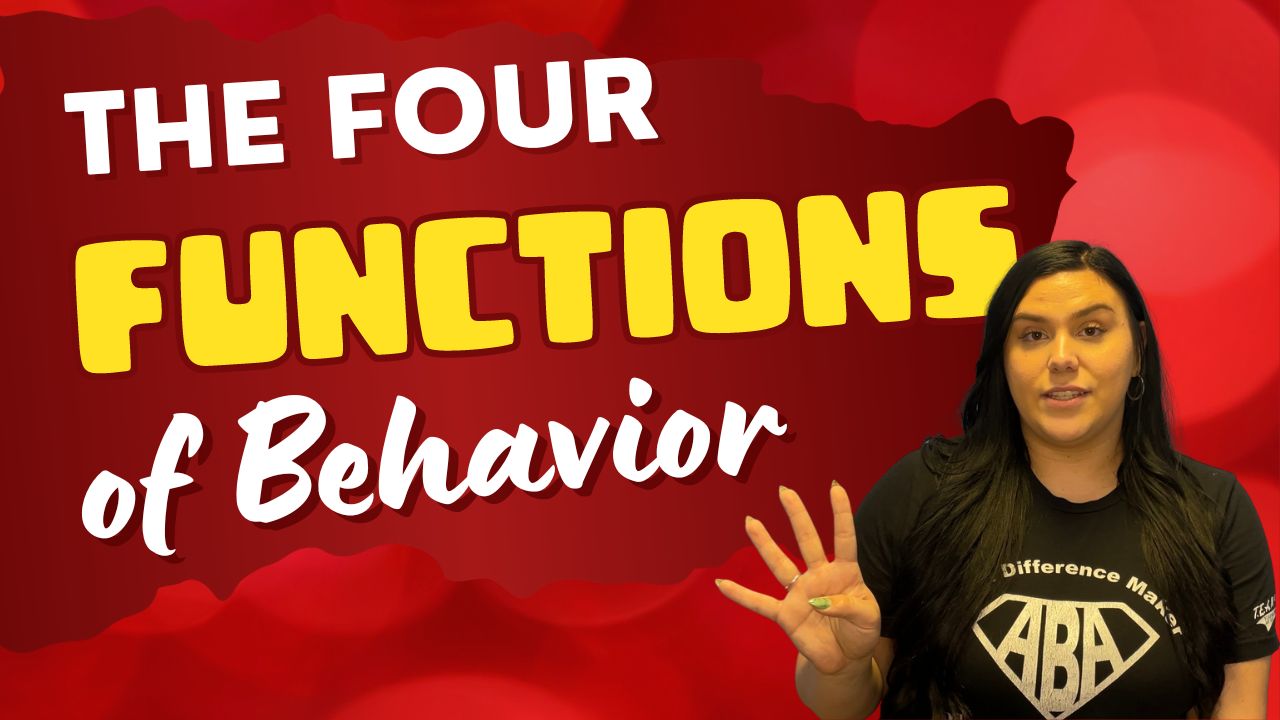In the video below, RBT Kenzie explains the 4 functions that behaviors serve and offers tips for parents to respond to challenging behaviors! Scroll down to read more.
Tantrums can happen at any age, not just during the “Terribles Twos”. You may have experienced a situation when a child is showing behaviors such as whining if they don’t get candy, flapping their hands while they are watching a video, or running away when you tell them to clean up. Today we will help you understand WHY your child is having these behaviors and give some tips as to how you can respond to their behavior.
There are 4 main reasons for your child’s behavior. By identifying the reasons WHY the behavior may be occurring, we can understand a child’s actions and respond appropriately as parents!
All behaviors have a purpose. The 4 reasons behaviors occur are: Sensory, Escape, Attention, and Tangibles (you can easily remember these by the acronym SEAT).
- Sensory: Sensory-seeking behaviors provide stimulation to experience a pleasant sensation or replace discomfort. While this reason can occur at any time, It can happen especially when excited or anxious. Sensory behaviors can include hand clapping, jumping, and spinning.
- When your child is displaying behaviors that serve the function of sensory input, try providing deceleration techniques (such as using a sensory brush when they are seeking touch)
2. Escape: Escaping behaviors remove undesirable situations and interactions. These typically occur when tasks are hard, too easy, or boring. Escaping behaviors can include running away and hiding under the table.
- When your child is displaying behaviors in an attempt to escape, try offering choices or providing a “first-then” prompt with tasks they enjoy (such as “first we clean, then we watch TV”)
3. Attention: Attention-seeking behaviors provide feedback or recognition from others. This happens when social attention is desired.
- When your child is displaying behaviors for attention, try to provide attention when they are exhibiting appropriate behaviors (such as providing praise by saying “good job playing nicely”) and don’t react to the challenging behaviors.
4. Tangible: Tangible-seeking behaviors provide preferred activities or items. This happens when your child wants access to something.
- When your child is displaying behaviors in an attempt to access an item, try having them ask for items appropriately. (For example, if your child wants to play on the iPad they can request it nicely instead of screaming)
Now that we understand what the four functions of behavior are and when they may occur, we can now identify what the behavior is, and what happened prior and after by using the ABCs of behavior.
- Antecedent: Events that happen before the behavior (e.g. Mom tells child “it’s time to clean up toys”)
- Behavior: A reaction to the antecedent, what the behavior looks like (e.g. whining)
- Consequence: What directly happens after the behavior (e.g. Mom says “First clean up, then we can get ice cream).
Our BCBA’s at TEAM 4 Kids can help parents understand their child’s behaviors. Call us today to inquire about our ABA program!

 Angelique Robles, RBT and Kenzie Mitton, RBT
Angelique Robles, RBT and Kenzie Mitton, RBT

